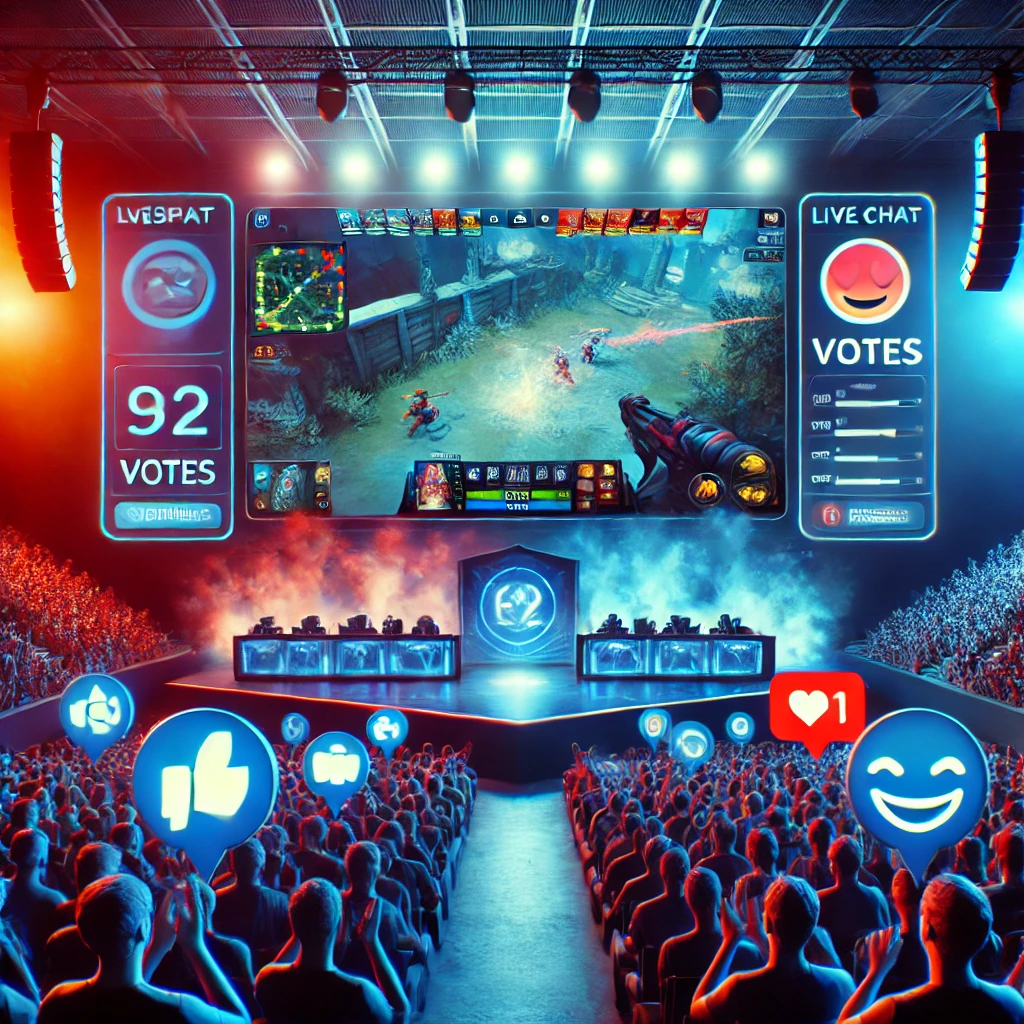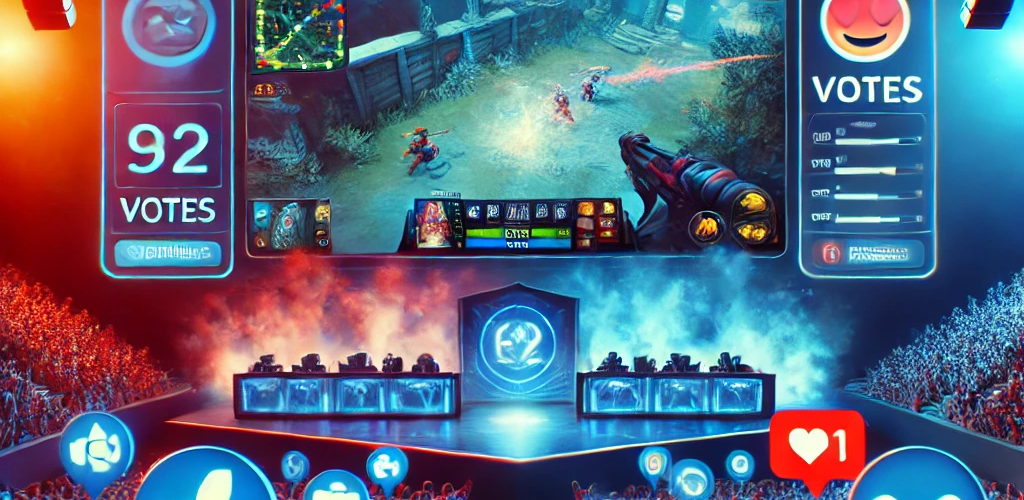In the evolving landscape of gaming, audience engagement in gaming has become just as crucial as gameplay itself. This shift is transforming how games are experienced by audiences worldwide. Fans watch, cheer, and interact from the “sidelines”, and they are shaping modern game design.

With the rise of streaming platforms and Esports, audiences have become active participants, blurring the lines between watching and playing. At Red Iron Labs, we’re embracing this cultural shift, and our upcoming title, MRDRBRS, takes audience engagement to a whole new level.
The Rise of Audience Engagement in Gaming
Gaming has transformed into a shared experience. Platforms like Twitch and YouTube Gaming boast millions of viewers daily, while Esports events rival traditional sports in viewership numbers. For example, Twitch reported an average of 2.5 million concurrent viewers in 2023, and Esports events like League of Legends Worlds drew over 5 million peak viewers during its finals. In 2023, for instance, global Esports audiences exceeded 500 million, driven by tournaments like League of Legends Worlds and The International. This surge highlights a growing cultural trend: people love watching games, even if they don’t play themselves.
Why is this happening? Watching games taps into shared experiences: the excitement of competition, the joy of community, and the impact of storytelling. For many, gaming isn’t just a pastime—it’s a shared cultural touchstone. Developers who recognize this shift are creating features that prioritize audiences, turning passive viewers into engaged participants (i.e. fans).
From Passive Observers to Active Participants
Moreover, interactive audience experiences are redefining what it means to watch a game. Take Twitch Plays Pokémon, a landmark experiment where over 1.1 million viewers collectively controlled a game in real-time, logging more than 36 million total views over its 16-day run. The chaotic success of this project demonstrated the appetite for active engagement. Today, games like Jackbox Party Pack or Among Us cater to audiences by making it easy for viewers to interact, vote, and influence gameplay.
The psychology behind this is simple: participation creates investment. Audiences who feel they have a stake in the game— even a small one— are more likely to stay engaged, share the experience, and become advocates for the title. Research on participatory design in digital media supports this, showing that interactivity can increase both emotional engagement and retention.
What We’ve Learned: Insights from the Field
At Red Iron Labs, we’ve seen firsthand how powerful audience-driven experiences can be. During Muffin Fight events, surveys revealed that over 65% of attendees enjoyed watching and interacting socially as much, if not more, than playing themselves. Spectators would laugh, strategize, and cheer on their favorite players, creating an atmosphere that elevated the game’s energy. Observational data from these events showed that over half of the attendees preferred watching and interacting socially over direct gameplay.
This insight guided our approach to MRDRBRS. We wanted to build a game that wasn’t just fun to play but also compelling to watch. Our goal: make audiences active participants in the experience, rather than passive bystanders.
How MRDRBRS Innovates Audience Engagement in Gaming
With MRDRBRS, we’re integrating features designed specifically for audiences. Here’s how:
- Influence Gameplay in Real-Time: Audiences can interact with the game’s environment, affecting players’ strategies. For example, they might vote on power-ups, spawn challenges, or trigger environmental effects.
- Collaborative Audience Features: Viewers can team up to impact the game together, fostering a sense of community. This goes beyond individual interaction, creating shared moments for everyone watching.
- Dynamic Feedback Loops: Players respond to audience decisions, creating a back-and-forth dynamic that’s engaging for both sides. This feedback loop keeps everyone invested, whether they’re playing or watching.
These features reflect our current vision for MRDRBRS, but we recognize the importance of staying flexible. As we continue in the design phase, we plan to test these assumptions extensively to ensure they align with what players and fans truly want. If our findings suggest a different direction would better serve our audience, we’re committed to adapting to meet those needs.
Our ultimate goal remains the same: to make MRDRBRS accessible to a broad audience, including those who may never pick up a controller.
Why Audience Engagement Matters for the Future of Gaming
As gaming continues to grow, the line between players and fans will blur even further. Audience-driven features are more than novelties; they act as tools for inclusivity and broader fan engagement. By making games fun to watch and influence, developers can reach audiences who might feel intimidated by traditional gameplay.
Recent research highlights the importance of community-driven gaming experiences among younger audiences. A 2024 survey by the Pew Research Center found that 72% of teens who play video games do so to spend time with others, emphasizing the social aspects of gaming. Similarly, a 2023 report by Ipsos revealed that personalization, customization, and the desire for social interaction are key factors driving gaming engagement among younger gamers aged 13 to 34. These findings underscore the growing demand for games that foster connection and community.
This approach also expands gaming’s cultural footprint. Games that cater to audiences become events, uniting communities around shared experiences. For developers, this means greater reach, longer player retention, and the potential to redefine how games are consumed.
Connecting the Dots
In our last article, we discussed the importance of multiplayer and social interactivity in creating immersive experiences. Audience engagement builds on this foundation, turning games like MRDRBRS into shared cultural events. And in our next piece, we’ll explore how cross-platform play ensures that these experiences are accessible to everyone, regardless of their hardware or level of experience.
Together, these pillars—social interactivity, audience engagement in gaming, and accessibility— form the foundation of MRDRBRS and our vision for the future of gaming.
Join the Red Iron Labs Community
We’re diving deep into MRDRBRS with a ton of behind-the-scenes insights. Want to stay updated? Subscribe to our newsletter to join the community! You can also keep it low key for now and just follow us on LinkedIn ✌🏽
About Us
We’re a Calgary-based studio focusing on virtual reality. We make games and products for VR. Learn more.

